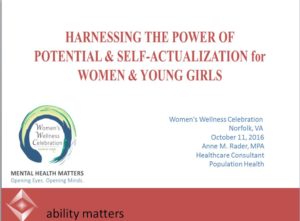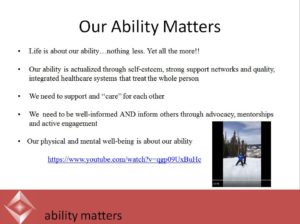![]() Changing the Face of Beauty is launching #facemybeauty to show the #adworld the power, confidence and beauty that comes in different colors, shapes and abilities! This is a terrific ad campaign to see people for their ability and potential. While being fabulous and beautiful! CTFOB empowers people living with disabilities by advocating for inclusive imagery, changing perceptions and igniting futures in the media and advertising industries to change the face of beautiful. Join the campaign, share your story and change the beautiful ability marketing conversation. #facemybeauty, #adworld, #beautifulwomenwithdisabilitiesrock, #stephaniethomas, #Cur8able, #pushgirls, #angelarockwood, #katiedriscoll
Changing the Face of Beauty is launching #facemybeauty to show the #adworld the power, confidence and beauty that comes in different colors, shapes and abilities! This is a terrific ad campaign to see people for their ability and potential. While being fabulous and beautiful! CTFOB empowers people living with disabilities by advocating for inclusive imagery, changing perceptions and igniting futures in the media and advertising industries to change the face of beautiful. Join the campaign, share your story and change the beautiful ability marketing conversation. #facemybeauty, #adworld, #beautifulwomenwithdisabilitiesrock, #stephaniethomas, #Cur8able, #pushgirls, #angelarockwood, #katiedriscoll
Monthly Archives: October 2016
Driving Value-Based Success for Healthier Populations
 The pursuit of value-based healthcare continues to focus on how the use of evidence-based guidelines, duration tables and analytics drive value-based success for providers, employers, patients and payers. The healthcare landscape is rapidly changing and, with it, the way individuals receive care. To succeed in this environment, ACOs and other risk-bearing provider organizations must collaborate with payers, employers and patients to achieve the Triple Aim. Deep bench, quality data analytics help stakeholders thrive in the new era of value-based care with proven approaches to managing and measuring the impact of evidence-based care.
The pursuit of value-based healthcare continues to focus on how the use of evidence-based guidelines, duration tables and analytics drive value-based success for providers, employers, patients and payers. The healthcare landscape is rapidly changing and, with it, the way individuals receive care. To succeed in this environment, ACOs and other risk-bearing provider organizations must collaborate with payers, employers and patients to achieve the Triple Aim. Deep bench, quality data analytics help stakeholders thrive in the new era of value-based care with proven approaches to managing and measuring the impact of evidence-based care.
This white paper examines how applying evidence-based guidelines, ACOs stand to gain on three fronts:
• Better outcomes
• Lower costs
• Improved patient experience
http://pages.modernhealthcare.com/healthierpopulations?utm_source=modernhealthcare&utm_medium=email&utm_content=externalURL&utm_campaign=am
Celebrating Women’s Wellness: Transforming Mental Wellness and Population Health
 It was very exciting to be a speaker at the Women’s Wellness Celebration sponsored by ARDX, a healthcare management and technology services and solutions provider that improves the quality, efficiency and effectiveness of healthcare for America’s most vulnerable populations. The 2016 Women’s Wellness Celebration (WWC), Mental Health Matters: Opening Eyes. Opening Minds., held October 11th at the Ted Constant Convocation Center in Norfolk, VA, brought together more than 300 women (and a few men) from non-profit organizations, hospitals and providers, local public health experts, and national policy and program leaders to bring awareness and incite action to mental health and well-being issues faced by adolescent girls and women.
It was very exciting to be a speaker at the Women’s Wellness Celebration sponsored by ARDX, a healthcare management and technology services and solutions provider that improves the quality, efficiency and effectiveness of healthcare for America’s most vulnerable populations. The 2016 Women’s Wellness Celebration (WWC), Mental Health Matters: Opening Eyes. Opening Minds., held October 11th at the Ted Constant Convocation Center in Norfolk, VA, brought together more than 300 women (and a few men) from non-profit organizations, hospitals and providers, local public health experts, and national policy and program leaders to bring awareness and incite action to mental health and well-being issues faced by adolescent girls and women.
My presentation, “Ability Matters: Harnessing the Power of Potential and self-Actualization for Women and Young Girls,” showcased best practice integrated care models and innovations that improve women and young girl’s emotional and physical well-being. I highlighted the importance of integrated care models that treat the mind, body and spirit to address the whole person and the different circumstances that impact our mental well-being. The Women and Health Initiative (W&HI) at the Harvard T. H. Chan School of Public Health, the Women’s Health Research Institute at Northwestern University, and the Cerebral Palsy Foundation represent female-driven solutions to strengthen health systems to better address women’s unique healthcare needs. 
A key point was imparting the importance of health advocacy and bringing their voice to the strategic direction of parity and mental health legislation. Your voice matters! I stressed the importance to be well-informed on our health and well-being, be self-aware, share our experiences and be proactive. Let decision-makers know the importance of equitable, accessible and affordable healthcare that improves our ability to be healthy, active and successful women.
The highlight was talking about my ability to ski Black Diamonds at Vail and how it is my mental and physical well-being that allows me to take on these daring runs. I challenged the group of women to take on their own “Black Diamonds” in life and exceed their potential, to be at their absolute personal best mentally and physically, while defying expectations. The session with everyone gasping, yet invigorated, while watching my ski video to see exactly how it’s done!
Thank you to Angela Reddix, Lateefah Hughes and the entire ARDX Women’s Wellness Celebration production team for the opportunity to make a difference for women’s mental well-being.
Bringing the Patient-Centered Specialty Practice Model to Multiple Sclerosis Patients
Under the leadership of Dr. Carmelo Tornatore, M.D, Chair of Neurology, Georgetown University Medical Center has launched an innovative pilot medical home project to transform multiple sclerosis care.
The medical home model is not e xactly new to neurology. For years, neurologists say, they have had to manage comorbidities of patients with chronic conditions such as epilepsy and multiple sclerosis, coordinating preventive services and acute and end-of-life care — and communicating all aspects of patient regimens between hospitals and nursing homes or other specialists and primary care physicians.
xactly new to neurology. For years, neurologists say, they have had to manage comorbidities of patients with chronic conditions such as epilepsy and multiple sclerosis, coordinating preventive services and acute and end-of-life care — and communicating all aspects of patient regimens between hospitals and nursing homes or other specialists and primary care physicians.
But when Neurology Today reached out to determine how many neurologists had embraced the medical care model — in which each player on the treatment team would be paid separately, but the primary care physicians would receive reimbursement so they’d have more time to invest in face-to-face visits, telephone and e-mail consultations with patients, and discussions with others who are involved in a patient’s care — few identified their practices as medical homes.
One neurology practice hopes to change that. Carmelo Tornatore, MD, chair of the department of neurology at Georgetown University Medical Center, has secured private funding to launch the first multiple sclerosis-focused patient-centered medical home within Georgetown’s Multiple Sclerosis Center, which he directs.
The medical home is being planned as a clinical trial: 500 of the center’s 3,000 MS patients will be recruited into the three-year study. They will be followed for a year under the standard care model, before being transitioned into the patient-centered specialty practice model. We are going to compare patient-reported as well as physician-reported outcomes from before the transition and after. Will we have fewer hospitalizations and fewer emergency department visits? Will we see better quality of life measures? We suspect that we will,” Dr. Tornatore said. “The whole idea is to take a more proactive approach to caring for patients, rather than being reactive.”
The practice will identify patients with higher needs — those with more active disease, who may have more hospitalizations or more emergency department visits — and do a “gap analysis.”
“Maybe they need more social services. Maybe their disease-modifying agent is incorrect, maybe they need physical therapy. Maybe they are underinsured and we need to look at their insurance,” said Dr. Tornatore. “We will focus on identifying those at-risk patients and take a multidisciplinary approach to intervention.”
Days will be set aside for patient education — time that should become available because clinicians can do much more with telemedicine and other methods rather than being subjected to what Dr. Tornatore calls the “tyranny of the office visit.”
“Our schedules shouldn’t be jam-packed because we’re taking care of things in other ways, so the patients who need to come in truly are acute,” he said.
Dr. Tornatore believes that this concept is the value-based proposition that Medicare and third-party payers are looking for. “Medicare is interested in moving more away from fee-for- service and toward outcomes,” he said.
“This is a way for neurologists to start moving in that direction and to start quantifying the tremendous value of what we bring to patients. They are asking for these alternative payment models [APMs] by 2019 or 2020. Couldn’t one of those APMs be a neurology specialty home, where we get paid as a lump sum for this group of patients, and we have quality measures that we have to meet?”
The trial, he added, will also look at the economics of such a plan. “We want to understand the level of reimbursement that is needed to take care of patients with a chronic disease like multiple sclerosis in a patient-centered approach.”
Dr. Tornatore suggests that the patient-centered specialty home could be a model for multiple sclerosis centers and other neurology practices throughout the country. “You could have an epilepsy-centered specialty home, one for Parkinson’s, one for Alzheimer’s — the concept is the same. For people with chronic neurologic disorders, we are their primary care provider.”
http://journals.lww.com/neurotodayonline/Fulltext/2016/09220/Bringing_the_Patient_Centered_Specialty_Practice.5.aspx
